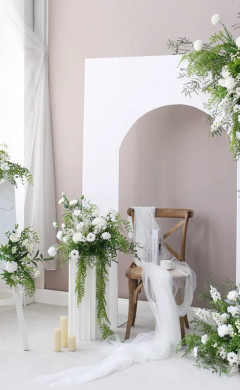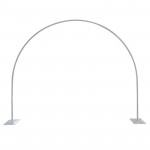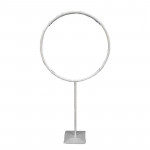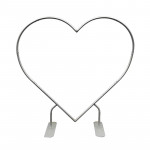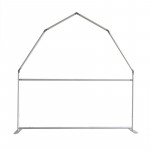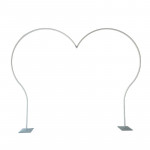Bouquet Handles!
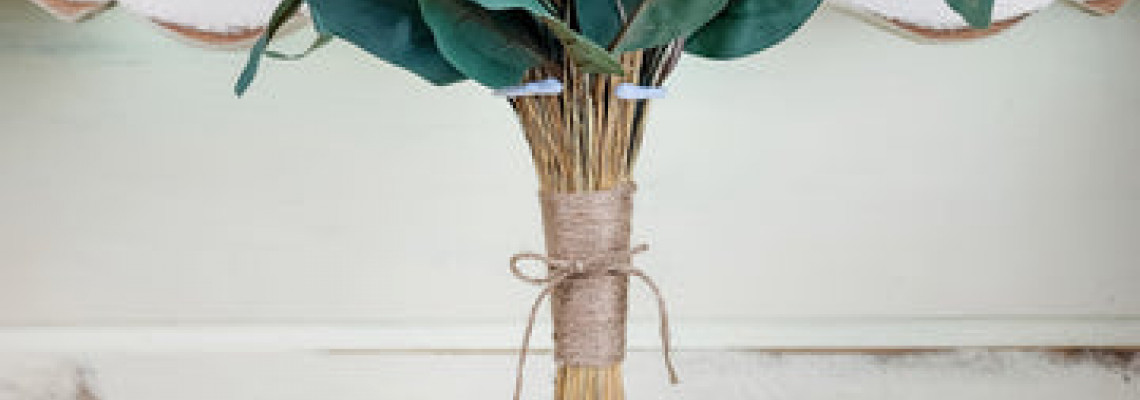
Bouquet Handles!
You've selected your filler, stemmed, colored, and assembled the ideal bouquet! The crucial query at this point is: how would you like to complete the handle?
These are a few well-proven techniques for wrapping your handles!
Burlap/Ribbon Full Handle Wrap
Traditionally, one of the best ways to adorn your bouquet is with a total handle wrap. You have so many alternatives with this technique—you may use lace, burlap, or ribbon, for example!
I began by cutting the wires to the desired length (basic guideline: position both of your fists, one over the other, beneath the bouquet on the handle, and add 1-2" of open wire for the length at the bottom). Next, I wrapped the handle in green vinyl tape. To hide the handle, you can alternatively use electrical or flowery tape.
As you can see in the top right and bottom left photographs, I then cut two 2-3" pieces of my Jute Burlap Ribbon (which is really excellent if you're going for a twine vibe!) and hot glued each to the bottom of the wrapped handle.
It's time to cover the entire handle after the bottom has been coated! To secure the end of the ribbon in place, apply a small amount of hot glue to the top of the tape.
It's time to get wrapping! Twirl your bouquet tightly, covering the handle with the ribbon. This initial down pass will be uneven and not appear exceptionally smooth. You don't have to worry about it! For this reason, we climb back up and rewrap the handle, making note of the gap visible between the ribbon's borders.
Cut the ribbon along the last edge while the adhesive dries. Now is the time to use a little hot glue to make sure that anything that might come free is held in place.
There you have it, then! A handle that is tightly covered.
Corn Broom Handle
Using a corn broom to finish off your stems is the simplest way to give them a gorgeous appearance.
Here are two quick and easy ways to add some glitz to your twine wrap!
Cut another length of twine and wrap it around the handle after wrapping. A tiny bow adorably completes the bouquet.
Cut three strands of rope the same length to give the handle more flair. Start braiding the twine together by tying a knot at one end. You can also use string, yarn, or other thin twine for this. After the braid is finished, snip off the top knot and adhere the braid to the top of the twine handle using glue. Encircle the entire braid around the upper portion. Just a tiny bit of adhesive should be used where the top braid piece joins itself. After the glue has dried, pull the braid over the front of the bouquet and secure it with adhesive to the twine wrap's bottom. Pull the braid back up to the top of the twine wrap after you have finished wrapping it entirely around the bottom of the wrap to form an "X" design. Cut off any extra braid and dab on some hot glue at the last connection point.
Though it may seem complicated, you can make some really cool handles using braided twine if you experiment!
Faux Filler Stems/Chiffon Ribbon Partial Wrap
For this one, I wanted to demonstrate how to add faux filling and a long, flowing ribbon made of muslin or chiffon to finish it off.
As a first step, ensure that your stems are trimmed to a length that is marginally less than the desired handle length. You don't want the flowery tape or vinyl to go all the way around the stems for this type of handle finish.
Okay, so fake stem fillers. First and foremost, you should select the ones that complement your design. Next, cut them to a length that will allow them to tuck up inside the flowers, greenery, and filler (the top correct figure illustrates how to mix them at the top of the handle) and go below the cut wires that will be in the middle of the handle by about half an inch.
In thirds, add the stems to your handle. Tape down the part of the stems that you have added. Complete the entire process. Your stems may start to resemble a spiral, as seen in the bottom left image. Pulling or bending the imitation stems out at the bottom and rearranging them will assist in making the base appear more authentic and organic.
I chose muslin or chiffon ribbon for this wrap because I wanted it to lend a lengthy, flowing element to the bouquet. Start by locating the ribbon's center and wrapping it around the top of the desired covered area (left photo). Continue tying the ribbon in various portions along the way down to cover the tape and however much of the handle you want to be covered in order to achieve this purposely imperfect ribbon effect. To finish off this adorable arrangement, I tied a simple ribbon (believe me, this is the best I can do!).
The Cascade
This is certainly something you have been hoping to see if you are dealing with a tilted bouquet handle because it may be quite the task!
To properly bulk up this component, I use an extra thick kind of jute twine. The first step is to wrap the holder with it. Always glue the beginning piece of twine, ribbon, etc., to the bottom while dealing with cascades. I start and end everything there since it won't be noticed!
I begin at the top, wrap down to the bottom, and then wrap back up to the top like I would with any other kind of wrap.
You could simply skip the following step and cover the plastic circle piece instead of adding faux stems. You could then add ribbon on top of the twine or leave it as is as your finished wrap!
This is the ideal time to put your fake filler stems if you want a natural stem look. As long as they complement one another nicely, they don't have to match precisely! As said previously in this blog post (the section on chiffon wrap), add them in pieces and tape them down as you go. The stems underneath that face the front of the bouquet must be shorter than those toward the back since the holder is skewed.
After attaching the fake stems, adhere the leaves straight to the circular plastic portion. These don't have to be extremely attractive. They are there to ensure that, once your final filler pieces are added, the white plastic is invisible.
We need to add foliage and fillers to finish this section since we want to ensure that the stems are connected to the cascade. To begin, I tucked in a little extra eucalyptus to emerge from the top of the fake stems. I then placed a few filler pieces on top of the stems and taped them down to tie in the remaining fillers for the cascade.
You can finish the handle as you'd like now that the stem tops are tucked away into the overall cascade! I chose to wrap a quarter with satin ribbon.
Once more, I began by adhering the ribbon's beginning to the cascade handle's underside. Once everything is secured, pull firmly and twist your bouquet until you have covered the desired amount of the handle. I will glue the lowest ribbon wrap down (middle picture) with a satin ribbon, wait for it to dry, and then start back up to finish it.
I performed a small ribbon twist technique at the top of this handle design to create a whimsical little top finish. Simply wrap the ribbon around the entire bouquet, twisting it every inch or so.
Any of these methods can be used to create any kind of bouquet. Please let us know if you would want to see any more handle wraps!
